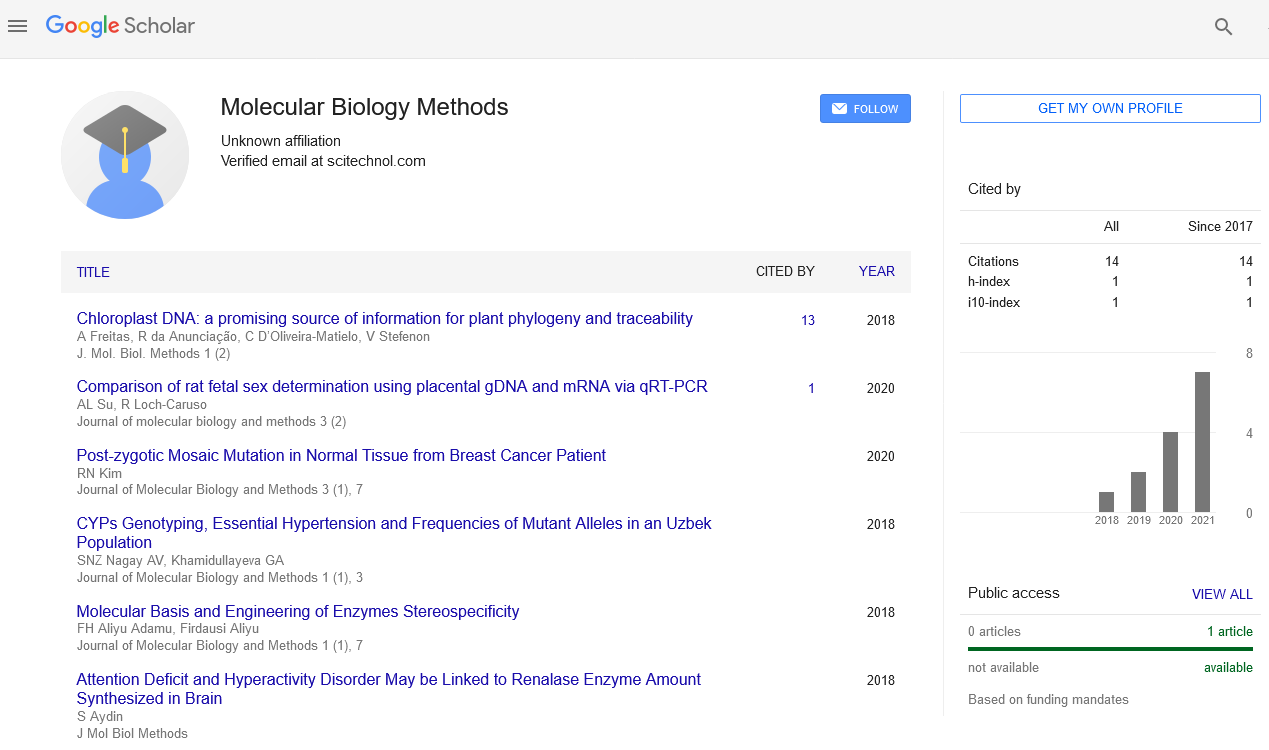Commentary, J Mol Biol Methods Vol: 4 Issue: 4
Bioinformatics is an Interdisciplinary Field that Creates Techniques and Programming Instruments
Ahmed Hegaz*
Department of Microbiology and Immunology, National Research Center, Dokki, Giza
*Corresponding author: Ahmed Hegazi, Department of Microbiology and Immunology, National Research Center, Dokki, Giza, E-mail: ahmad@hegazi.com
Received date: July 07, 2021; Accepted date: July 22, 2021; Published date: July 29, 2021
Keywords: Apoptosis, Biochemistry, Bioinformatics
Introduction
Bioinformatics is an interdisciplinary field that creates techniques and programming instruments for understanding natural information, specifically when the informational collections are huge and complex. As an interdisciplinary field of science, bioinformatics consolidates science, software engineering, data designing, math and measurements to examine and decipher the natural information. Bioinformatics has been utilized for in silicon investigations of organic questions utilizing numerical and factual techniques clarification needed. Bioinformatics incorporates natural examinations that utilization PC programming as a component of their procedure, just as a particular investigation "pipelines" that are more than once utilized, especially in the field of genomics. Normal employments of bioinformatics incorporate the ID of competitor’s qualities and single nucleotide polymorphisms. Frequently, such recognizable proof is made with the point of better understanding the hereditary premise of illness, exceptional variations, beneficial properties, or contrasts between populaces. In a less conventional manner, bioinformatics additionally attempts to comprehend the authoritative standards inside nucleic corrosive and protein arrangements, called proteomics. Bioinformatics has become a significant piece of numerous spaces of science. In trial sub-atomic science, bioinformatics methods, for example, picture and sign handling permit extraction of valuable outcomes from a lot of crude information. In the field of hereditary qualities, it helps with sequencing and clarifying genomes and their noticed transformations. It assumes a part in the book mining of natural writing and the improvement of natural and quality ontologies to put together and inquiry organic information. It additionally assumes a part in the investigation of quality and protein articulation and guideline. Bioinformatics apparatuses help in contrasting, breaking down and deciphering hereditary and genomic information and all the more by and large in the comprehension of transformative parts of sub-atomic science. At a more integrative level, it dissects and lists the natural pathways and organizations that are a significant piece of frameworks science. In primary science, it supports the recreation and demonstrating of DNA, RNA, proteins just as biomolecular cooperations. Verifiably, the term bioinformatics didn't mean what it implies today. Pauline Hogweed and Ben Hesper begat it in 1970 to allude to the investigation of data measures in biotic systems. This definition put bioinformatics as a field corresponding to organic chemistry the investigation of compound cycles in natural frameworks. PCs became fundamental in atomic science when protein groupings opened up after not really set in stone the succession of insulin in the mid-1950s. Contrasting various groupings physically turned out with is unreasonable. A pioneer in the field was Margaret Oakley Dayhoff. She assembled one of the primary protein arrangement data sets, at first distributed as books and spearheaded strategies for grouping arrangement and atomic evolution. Another early supporter of bioinformatics was Elvin A. Kabat, who spearheaded natural grouping investigation in 1970 with his far reaching volumes of neutralizer arrangements delivered with Tai Te Wu somewhere in the range of 1980 and 1991. In the 1970s, new procedures for sequencing DNA were applied to bacteriophage MS2 and øX174, and the drawn out nucleotide successions were then parsed with enlightening and measurable calculations. These investigations represented that notable highlights, for example, the coding fragments and the trio code, are uncovered in direct measurable examinations and were subsequently confirmation of the idea that bioinformatics would be clever. With regards to genomics, explanation is the way toward denoting the qualities and other organic highlights in a DNA arrangement. This interaction should be computerized on the grounds that most genomes are too enormous to even consider commenting on by hand, also the craving to comment on however many genomes as could reasonably be expected, as the pace of sequencing has stopped to represent a bottleneck. Explanation is made conceivable by the way that qualities have unmistakable beginning and stop areas, albeit the specific arrangement found in these locales can fluctuate between qualities. The principal portrayal of an exhaustive genome explanation framework was distributed in 1995 by the group at The Institute for Genomic Research that played out the first complete sequencing and investigation of the genome of a free-living life form, the bacterium Haemophilus influenzae. Owen White planned and assembled a product framework to recognize the qualities encoding all proteins, move RNAs, ribosomal RNAs (and different destinations) and to make starting useful tasks. Most current genome comment frameworks work also, however the projects accessible for investigation of genomic DNA, for example, the Gene Mark program prepared and used to discover protein-coding qualities in Haemophilus influenzae, are continually changing and improving.
 Spanish
Spanish  Chinese
Chinese  Russian
Russian  German
German  French
French  Japanese
Japanese  Portuguese
Portuguese  Hindi
Hindi 